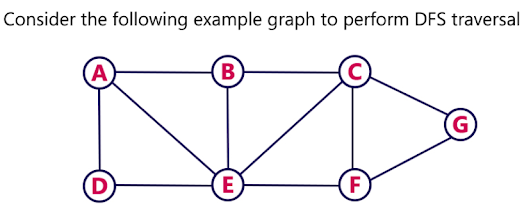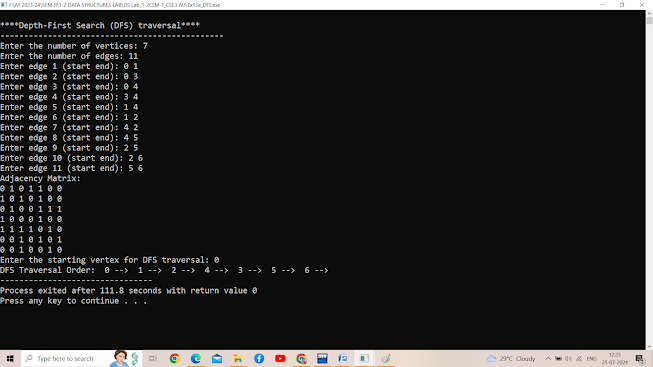C-program for the representation of polynomials using circular linked
list and for the addition of two such polynomials.
/*This program covers the representation and addition of polynomials using circular linked lists, demonstrating dynamic memory allocation, circular linked list operations, and polynomial arithmetic.*/
#include <stdio.h>
#include <stdio.h>
#include <stdlib.h>
// Node structure for the circular linked list
struct Node {
int coefficient;
int exponent;
struct Node* next;
};
// Function to create a new node
struct Node* createNode(int coefficient, int exponent) {
struct Node* newNode = (struct Node*)malloc(sizeof(struct Node));
newNode->coefficient = coefficient;
newNode->exponent = exponent;
newNode->next = newNode; // Pointing to itself for circular nature
return newNode;
}
// Function to insert a node in the circular linked list
struct Node* insertNode(struct Node* head, int coefficient, int exponent) {
struct Node* newNode = createNode(coefficient, exponent);
if (head == NULL) {
return newNode;
} else {
struct Node* temp = head;
while (temp->next != head) {
temp = temp->next;
}
temp->next = newNode;
newNode->next = head;
}
return head;
}
// Function to display the polynomial in descending order of exponents
void displayPolynomial(struct Node* head) {
if (head == NULL) {
printf("0\n");
return;
}
struct Node* temp = head;
do {
if (temp->coefficient != 0) {
if (temp != head && temp->coefficient > 0) {
printf(" + ");
}
printf("%dx^%d", temp->coefficient, temp->exponent);
}
temp = temp->next;
} while (temp != head);
printf("\n");
}
// Function to add two polynomials
struct Node* addPolynomials(struct Node* poly1, struct Node* poly2) {
struct Node* result = NULL;
struct Node* temp1 = poly1;
struct Node* temp2 = poly2;
if (poly1 == NULL) return poly2;
if (poly2 == NULL) return poly1;
do {
result = insertNode(result, temp1->coefficient, temp1->exponent);
temp1 = temp1->next;
} while (temp1 != poly1);
do {
struct Node* temp = result;
int found = 0;
do {
if (temp->exponent == temp2->exponent) {
temp->coefficient += temp2->coefficient;
found = 1;
break;
}
temp = temp->next;
} while (temp != result);
if (!found) {
result = insertNode(result, temp2->coefficient, temp2->exponent);
}
temp2 = temp2->next;
} while (temp2 != poly2);
return result;
}
// Function to get polynomial input from the user in descending order of exponents
struct Node* inputPolynomial() {
struct Node* poly = NULL;
int coefficient, exponent, prevExponent = -1;
char choice;
do {
int valid = 0;
while (!valid) {
printf("Enter coefficient: ");
scanf("%d", &coefficient);
printf("Enter exponent: ");
scanf("%d", &exponent);
if (prevExponent != -1 && exponent >= prevExponent) {
printf("Error: Exponents must be entered in descending order.\n");
} else {
valid = 1;
}
}
poly = insertNode(poly, coefficient, exponent);
prevExponent = exponent;
if (exponent == 0) {
break;
}
printf("Do you want to add another term? (y/n): ");
scanf(" %c", &choice);
} while (choice == 'y' || choice == 'Y');
return poly;
}
// Function to free the memory allocated for the polynomial
void freePolynomial(struct Node* head) {
if (head == NULL) return;
struct Node* temp = head;
do {
struct Node* next = temp->next;
free(temp);
temp = next;
} while (temp != head);
}
int main() {
struct Node* poly1 = NULL;
struct Node* poly2 = NULL;
struct Node* result = NULL;
char choice;
printf("****Representation and Addition of Polynomials using Circular Linked List****\n");
printf("=============================================================================\n");
do {
printf("Enter the first polynomial:\n");
poly1 = inputPolynomial();
printf("\nEnter the second polynomial:\n");
poly2 = inputPolynomial();
printf("\nFirst Polynomial: ");
displayPolynomial(poly1);
printf("Second Polynomial: ");
displayPolynomial(poly2);
result = addPolynomials(poly1, poly2);
printf("Resultant Polynomial after Addition: ");
displayPolynomial(result);
printf("\nDo you want to add another pair of polynomials? (y/n): ");
scanf(" %c", &choice);
// Free memory allocated for the polynomials to avoid memory leaks
freePolynomial(poly1);
freePolynomial(poly2);
freePolynomial(result);
poly1 = poly2 = result = NULL;
} while (choice == 'y' || choice == 'Y');
return 0;
}
Input/Output:👍
****Representation and Addition of Polynomials using Circular Linked List****
=============================================================================
Enter the first polynomial:
Enter coefficient: 7
Enter exponent: 4
Do you want to add another term? (y/n): y
Enter coefficient: -5
Enter exponent: 3
Do you want to add another term? (y/n): y
Enter coefficient: 6
Enter exponent: 2
Do you want to add another term? (y/n): y
Enter coefficient: -4
Enter exponent: 2
Error: Exponents must be entered in descending order.
Enter coefficient: -4
Enter exponent: 1
Do you want to add another term? (y/n): y
Enter coefficient: 2
Enter exponent: 0
Enter the second polynomial:
Enter coefficient: 9
Enter exponent: 4
Do you want to add another term? (y/n): y
Enter coefficient: -5
Enter exponent: 2
Do you want to add another term? (y/n): n
First Polynomial: 7x^4-5x^3 + 6x^2-4x^1 + 2x^0
Second Polynomial: 9x^4-5x^2
Resultant Polynomial after Addition: 16x^4-5x^3 + 1x^2-4x^1 + 2x^0
Do you want to add another pair of polynomials? (y/n): y
Enter the first polynomial:
Enter coefficient: 3
Enter exponent: 1
Do you want to add another term? (y/n): n
Enter the second polynomial:
Enter coefficient: 4
Enter exponent: 1
Do you want to add another term? (y/n): n
First Polynomial: 3x^1
Second Polynomial: 4x^1
Resultant Polynomial after Addition: 7x^1
Do you want to add another pair of polynomials? (y/n): n
--------------------------------
Process exited after 191 seconds with return value 0
Press any key to continue . . .













